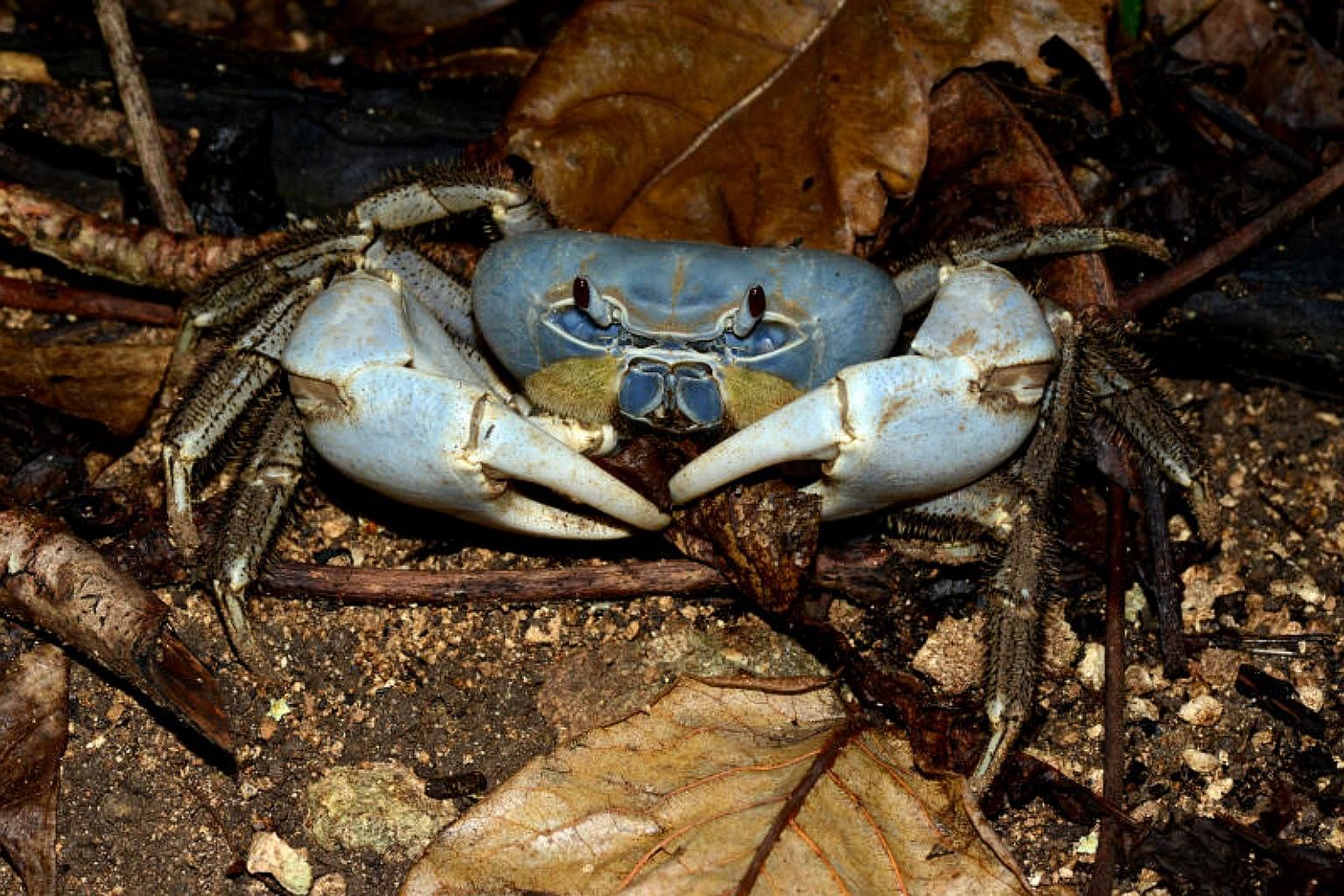Singapore scientists uncover gifts of Christmas Island
Sign up now: Get ST's newsletters delivered to your inbox
Follow topic:
SINGAPORE - With a name like that, one would expect Christmas Island to bear many gifts. It has not disappointed.
Among its treasures is the red crab (Gecarcoidea natalis) - a unique crustacean found only on Christmas Island (it is in the Indian ocean) and nowhere else in the world. These creatures move en masse from forest to sea to spawn once a year, carpeting roads and homes a bright red, in a phenomenon that famed naturalist Sir David Attenborough reportedly regards as one of the most "astonishing and wonderful" sights.
But Christmas Island, located about an hour's flight from Jakarta, has more surprises in store, as Singapore scientists are discovering. Over four expeditions since 2010, the team has already discovered 10 species of crabs and prawns on Christmas Island, including the blue crab and the yellow-eye crab, which also cannot be found anywhere else in the world.
This festive season, people can get a glimpse of these creatures without having to travel all the way to the island that once belonged to Singapore. Specimens of the unique creatures are on display at the Lee Kong Chian Natural History Museum, in a temporary exhibition called Christmas Island Red launched on Monday (Dec 18).
"It highlights the historical links between both islands - Singapore and Christmas Island - why conservation is important, and the discoveries we've made. Our predecessors in the 1930s and 1950s described many new species and we continue with this tradition," said crab expert and museum head Peter Ng, who led the expeditions.
Christmas Island was named on Christmas Day 1643, and was part of Singapore until 1957, when it was sold by the British to the Australian government for 2.9 million pounds, according to the website of the Christmas Island Tourism Association. The official transfer took place in 1958.
But close ties remained between the Republic and Christmas Island, which has a population of about 2,000, especially on the research front. More expeditions are being planned for the years ahead.
"There was the assumption that the island's fauna was well-known, as it is located so close to Indonesia. But we found that there is still so many things left to discover," said Professor Ng. "There have been about 400 to 500 species recorded on the island, but I think that is a gross underestimate because the island is actually not easy to survey as it has a very rugged landscape - land and sea!"
Despite its welcoming name, Christmas Island is surrounded by inhospitable rocky cliffs which hampered early explorers. But Prof Ng and his team saw opportunity in adversity.
"I was intrigued why no one had found a freshwater cave crab even though the island had so many limestone caves. So I looked for caves with the Australian Parks people, went into them, laid traps... and lo and behold we caught two new species of crabs - Orcovita hicksi and Orcovita orchardorum, and a new prawn (Macrobrachium xmas). Why had no one caught them before? Because they are few and scattered in a big cave system. Traps worked best!"
But Prof Ng considers his best discovery on the island to be the blue crab, which has a unique shell the colour of the sky. The crab was previously thought to be a unique colour form of the widely distributed land crab, Discoplax hirtipes. But in 2012, Prof Ng and crustacean expert Peter Davie from the Queensland Museum discovered otherwise, after extensive study of museum and fresh specimens from Christmas Island and the and the whole Indo-West Pacific region.

"I had long known the blue crab was a problem," said Prof Ng. "I have been studying these crabs for the better part of a decade. When you put all the specimens from all over together, the differences are clear. And genetics has confirmed what we have seen." Discoveries are not always the result of breaking new ground, finding new habitats, or luck, he said.
"Very often, discoveries are the result of cumulative knowledge and patience - to slowly build up a case, build up the evidence and the comparative material. It comes to a prepared mind and a careful buildup. The blue crab, which we named Discoplax celeste is such a discovery."
Australian High Commissioner Bruce Gosper, who was at the launch of the exhibition on Monday, said: "I know that Singapore has been doing much work on Christmas Island over a number of years to chart that biodiversity... The work we're doing in this area is something that's been enhanced in recent years through the comprehensive strategic partnership between Australia and Singapore."

